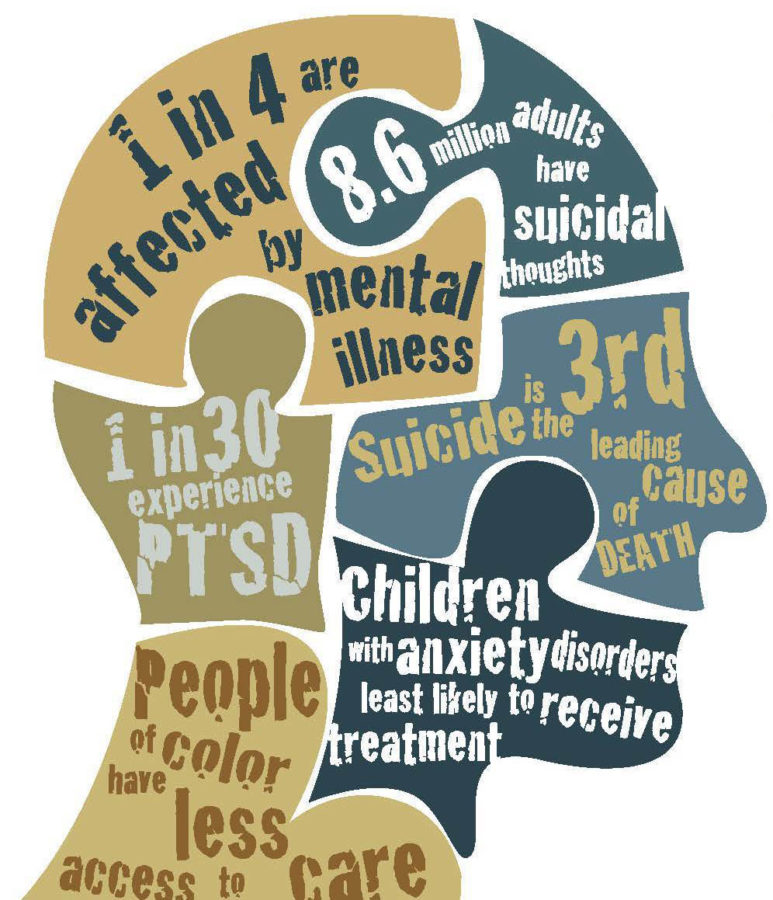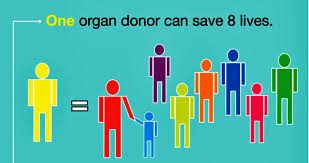The Reality of Mental Health in Teen-agers
Currently in the United States about 30 percent of girls and 20 percent of boys, totalling 6.3 million teens, have experienced an anxiety disorder (Schrobsdorff). Within the past few decades, the number of children, adolescents, and young adults with anxiety, depression, or other mental illnesses has increased dramatically and is still sky rocketing. Mental health issues can be triggered by a multitude of aspects and can happen at any age. In fact, many adults and supervisors are against getting more treatment methods and prevention activities because they think that teenagers all have it in their head, that they are coming up with issues that “aren’t real”. However, that is certainly not the case, for some teenagers feel so pressured by the standards of society and the threats of social media that suicide rates have increased to one in ten teenagers attempting to end their lives (Choi). Teens. Are. Ending. Their. Own. Lives. Although a psychological illness can not be seen and understood as easily as a broken bone, a cancerous tumor, or disease such as pneumonia or the flu, lack of knowledge about this topic can lead to offending someone with a real illness and can often times increase chances of suicide. In order to understand mental health issues, it is essential to understand what mental health disorders actually are, how they are caused, how these conditions can be treated, and what the controversy surrounding this topic is. Furthermore, communities all around the world need to be informed about the severities of mental health issues in adolescents.
Although mental health is a very broad term, there are a variety of illnesses and implications that can be categorized depending on age and situation. For example, anxiety, the general term for disorders that cause nervousness, fear, apprehension, and worrying, and depression, a serious medical issue that negatively affects how one feels, thinks and acts, are two very common mental illnesses that are being seen within adolescents. One very prevalent social issue in our society today is the excessive amount of psychological issues within teenagers. Mona Charen, senior fellow at the Ethics and Public Policy Center, interviewed a New England college administrator with decades of experience about what the most noticeable change he saw among students. To her surprise, he stated “The most outstanding thing that has changed is the enormous growth in the number of students with mental-health issues.” Not only does this show how mental health is worsening and not being treated but also how it is becoming more evident and taking over priorities in student’s lives. It is very interesting to see that the most prominent change was not something positive, like an increase in students joining extracurriculars or a higher grade point average for the average student, but is an illness that takes over student’s brains and makes them struggle through life’s obstacles. Along with having many causes that lead to a variety of side effects of having a mental health illness, suicide is becoming more and more severe in the lives of students who may not even show signs of syndromes such as depression or anxiety. According to Charles Q. Choi, frequent contributor to Scientific American, suicide is currently the third leading killer of teenagers and each year roughly one in 10 teens ages 15-19 attempted suicide at least once, with parents not knowing of their attempts 90% of the time. The above infographic conveys the widespread nature in teens and indicates that addition illnesses are umbrellaed underneath depression, possibly leading teens to further problems and worries (York Region). Adolescents in our generation are so afraid of facing society and admitting that they have a problem that they think ending their life is the only way to make things better. In addition, the issues of mental health have led to further permanent psychological issues that affect teens as adults such as lack of self confidence that can develop into struggles with forming relationships in the future. The increase in these conditions is affecting the way teenagers live during the times of their lives that they are supposed to be enjoying the most.
Because most mental health issues do not simply appear overnight, there are numerous origins that gradually lead into developing such disorders. Smith Bhandari with WebMD has researched that some mental illnesses have been linked to the abnormal functioning of nerve cells in the brain or certain defects, infections, or injuries of the brain. When caused by such conditions, treatment methods and other procedures of tweaking the chemical imbalance are harder to be successful with than when caused by external sources because the body has a hard time adapting to new concepts that were originally biologically formed. However, there are a plethora of psychological causes that contribute to acquiring mental illnesses. For example, WebMD also states that issues such as severe trauma, poor ability to relate to others, transferring schools or jobs, or even feelings of inadequacy can lead to mental illnesses. In addition, family life and acts of bullying heavily influence the severity and upcoming episodes of depression or anxiety. Dr. Mike Altekruse, Neenah Joint School District Mental Health Coordinator, stated “I believe that bullying can exasperate such conditions, but usually will not cause them.” Because depression is usually a gradual occurrence, negative interactions only tend to make students feel worse about themselves. Imagine going through your day, having your mood fluctuated from a state of miserable melancholy to marvelous meditation and contentment. Some conditions, such as bipolar disorder, cause teens and adolescents to experience mood changes such as this and other extreme episodes that may trigger self-harm. Although having a perfect home life may not mean that one will never develop a mental issues, having obstacles such as neglect, death or divorce of parents, or even physical or substance abuse by guardian can put an individual into a dark place where he or she feels afraid to let others know what is going on. This is such a dilemma in many communities and schools because more times than not, teens disguise what they are feeling and do not reach out to anyone to get help. In addition, it is very difficult to relate to others’ family life because sometimes getting involved triggers teens to become defensive of themselves, causing them to fall deeply into the hole of worry and despair. Although there is no way of avoiding depression and other disease that creep upon us, staying healthy and focusing on what is important can lead to positive lifestyles.
Getting injured or acquiring an illness eventually has to lead to getting treatment and making sure the body becomes healed and healthy. Many injuries and illnesses can be cured with treatments such as medicines or surgeries, but mental health issues involve a psychological component that takes much more therapy and long lasting treatments rather than a one step remedy. When it comes to mental health in teens, it is often times hard to convince them to get actually get help because they feel ashamed and anxious about their struggles, causing them to have a hard time conveying their problems. In fact, Susanna Schrobsdorff, the Chief Strategic Partnerships Editor and a columnist at TIME, researched in a 2015 report from the Child Mind Institution that “…only about 20% of young people with a diagnosable anxiety disorder get treatment.” While many behaviors of self-harm are kept secretive, numerous parents, teachers, and other adults are unsure of how to proceed with treatment for their child because of the lack of communication. Depression causes teens to fall behind in school and activities, depression causes eating disorders and lack of self-confidence in appearance, depression causes anxiety and other obsessive disorders; therefore, a variety of treatments must be vigorously pursued and implemented. Although there are few medications for treating depression, Natalie Shea, certified counselor at Neenah High School, stated that “To build their mental health, students and individuals often work with their family members, physicians, a community counselor, and possibly a psychiatrist for medication as needed.” In addition, she agrees that therapy sessions and acts of mindfulness can help clear the brain and express feelings. Depression and anxiety often try to take over the life of an individual, but staying involved with usual activities, doing things that make you happy, and spending time with friends and family who care can help bring one back to reality. Mental health illnesses may seems scary, but staying positive and working through the struggles of life rather than avoiding them will help one find their happy self.
With every issue comes a difference of opinions and thoughts, most of the time causing controversy and argument to debate which side is “correct”. In the case of mental health issues, there are a variety of opinions not only on how to treat these illnesses but also on how they are represented and if these conditions are really as severe as they seem. One main issue that revolves around mental health issues is how it is represented in the media because a large amount of magazines, books, and movies either make mental health seem more or less severe than it actually is. For example, Kirstin Fawcett, contributor to the US News and World Report, agrees that most knowledge of mental illnesses comes from what one reads or watches, and that our society needs more realistic portrayals of the everyday struggles associated with these disorders. Most media resources describe people with mental health issues as being criminal and violent, childish and silly, or difference in appearance; however, this is exaggerated in most videos and articles, and every case of depression or anxiety looks different. Nikki Marks, a 46 year old female who has bipolar disorder, stated “In real life, mental illness shows up differently in everybody (Fawcett). The media does not represent the complexity of mental illness in general. There’s this sense that it’s just a one-title-fits-everybody.” Because of this misinterpretation, the general people simply assume things from the media about individuals with these conditions and judge them based on stereotypes, causing them to feel worse about themselves and hide further into their struggles rather than talking their issues out. On the other hand, solving mental health illnesses often generates controversy because many adults and advisors think that teenagers are lying about their issues to exempt them from certain activities or bring them more attention. Right now, using the National Screening is a dispute because some people think that exposing teens to their real issues may cause them to think further about suicide or self-harm and that this method is tied to drug companies to get more people started on antidepressants. However, being screened is always a voluntary activity, requiring the consent of both teens and parents. After testing positive on the questionnaire and then getting further evaluation from a certified professional, Leslie McGuire, director of the TeenScreen, researched that “…72 percent reported their child was doing very well or shower significant improvement after participating in TeenScreen and seeing a mental health professional” (Choi). This is very important because it is hard to treat depression, but if teens are willing to participate in this activity, they can improve their state of mental health and find ways to keep themselves happy. While everyone has their own opinions, mental health is a very sensitive topic and offending those with psychological issues is like putting up barriers so they can never return to their true selves.
Though the stereotypes of mental health issues may seem mesmerizing and realistic, it is essential for the population to know the truth about the struggles of these disorders that teenagers experience. Conditions, such as depression, anxiety or bipolar disorder, are becoming more and more common in teens and adolescents, with the thought of suicide or self-harm turning into the only solution for many who are having trouble coping with life. There are a variety of aspects that can lead to mental health issues, including neglect, poor ability to connect with others, and even acts of bullying. When combined with the stress of school, relationships, and activities, teens are often pushed over the edge and don’t know how to focus and go forward with their regular lifestyle. Although there are no clear treatments paths for such disorders, gaining support from friends and family members, or even starting therapy sessions with a certified counselor, can help turn one’s life around and let emotions out to bring positivity in. While opinions may vary, going against the standards of the media and discovering the truth about mental health is a crucial part of helping teens accept who they are. Although there is a current rise in the severity of mental health in teens, hopefully these numbers will plateau or decline to increase the overall prosperity and happiness of communities around the nation. As Nido Qubein, American Lebanese-Jordanian businessman and motivational speaker, once revealed “Your present circumstances don’t determine where you can go; they merely determine where you can start.”
Works Cited
Altekruse, PHD, Mike. Personal Interview. 5 October 2017.
Bhandari, Smitha. “Causes of Mental Illness.” WebMD. WebMD, 2016. Web.
Charen, Mona. “The Kids Are Not Alright.” National Review. National Review, 02 June 2017. Web.
Choi, Charles Q. “National Screening for Mental Illness in Teens Inspires Controversy.” Scientific American. Scientific American, 23 Jan. 2007. Web.
Fawcett, Kirstin. “How Mental Illness Is Misrepresented in the Media.” US News. US News, 16 Apr. 2015. Web.
Qubein, Nido. Inspirational Quotation. Health Line.
Schrobsdorff, Susanna. “Teen Depression and Anxiety: Why the Kids Are Not Alright.” Time. Time, 27 Oct. 2016. Web.
Shea, Natalie. Personal Interview. 5 October 2017.
York Region. Mental Health Infographic. Pinterest. 2017.







